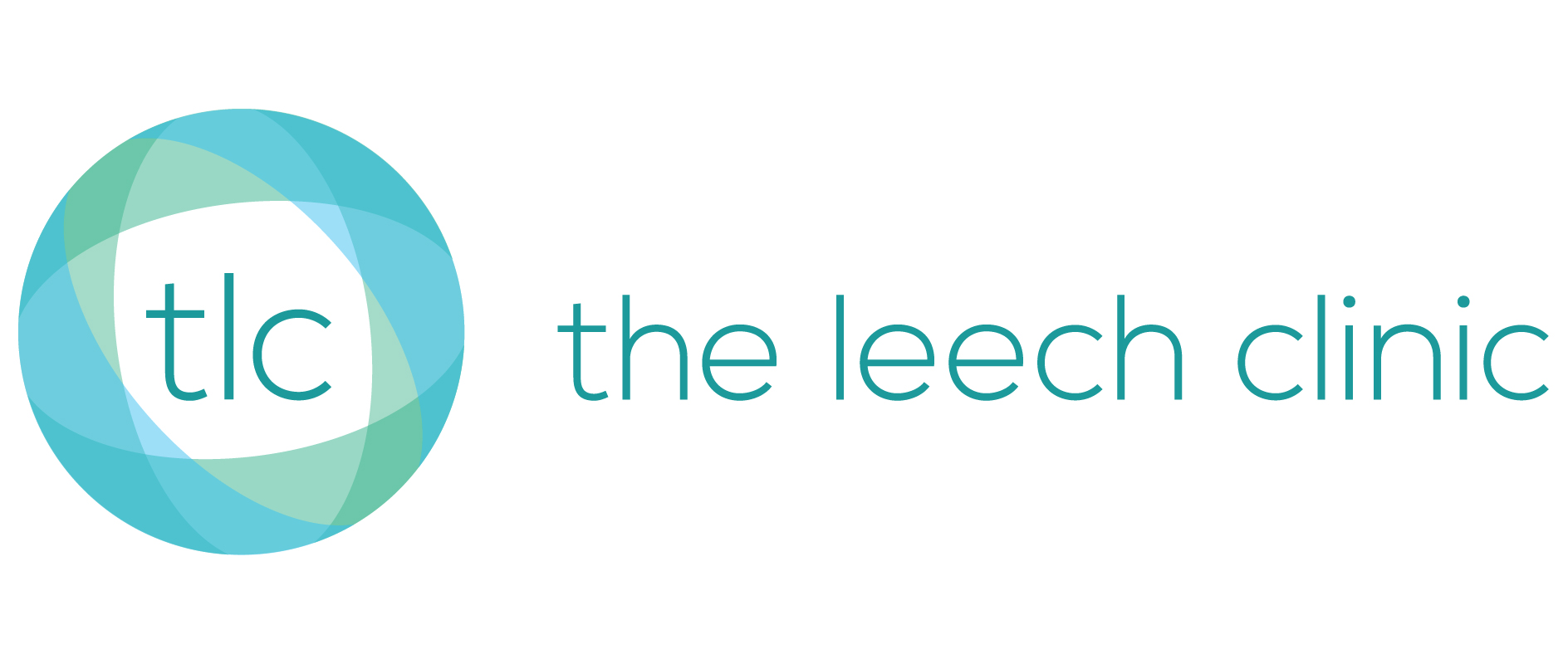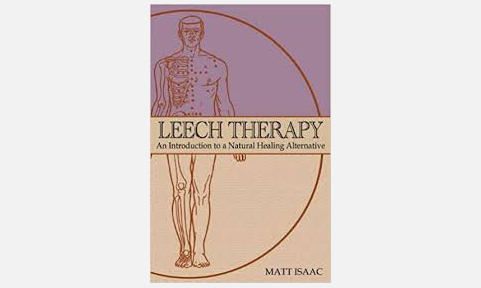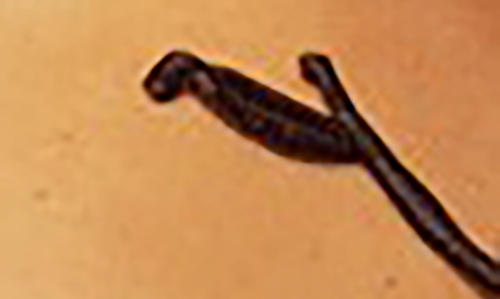Introductory Images
Clinical Images
Leeches used to treat hair loss and improve hair growth. Hair loss can be very distressing. It may be hereditary, or caused by illness, by the adverse effects of medications, or by stress. Leech therapy can help promote hair growth by improving circulation to the scalp. This in turn stimulates the hair follicles.
Close-up of a leech attached to the client’s finger. The main symptoms of osteoarthritis are pain and stiffness, making it difficult to move the affected joint and carry out certain activities. Leech therapy reduces the pain and inflammation associated with osteoarthritis, and increases the client’s ability to carry out everyday tasks such as washing, dressing, etc.
Leeches are attached to the client’s heel and foot to, treat plantar fasciitis. Symptoms of plantar fasciitis include pain or tenderness in the heel or arch of the foot, and pain with initial steps in the morning or after a period of rest. Also, pain with sudden stretching of the sole of the foot, and pain triggered by reaching up on tiptoe, or by walking upstairs. Pain is also experienced with prolonged standing or when wearing flat or unsupportive footwear. Leech therapy can improve symptoms of pain and discomfort for a period lasting from 6–8 months.
Leeches have been applied to the client’s abdomen, to boost the immune system and enhance general wellbeing. The immune system comprises organs and processes of the body that provide resistance to infection and toxins. The immune system defends our body against bacteria, viruses, fungi and foreign bodies. Organs of the immune system include the thymus, bone marrow, and lymph nodes. The white blood cells are another key component of the body’s immune system.
Leech therapy to treat warts on the right index finger. Warts are small, non-cancerous growths that appear when the skin is infected with one of the many viruses of the human papillomavirus (HPV) family. Warts can grow anywhere on the surface of the skin, but are more likely to appear on the hands or feet.
Leeches to treat a foot tendon injury. Foot tendon tears are usually caused by a fall on the foot, or by sudden pressure on the tendon. They can also be caused by repetitive use of the foot and ankle, in ways that put stress on the tendon. This injury is more likely to be seen in football, rugby players and athletes who put repetitive stress on their feet.
Leeches to treat a soft tissue injury. Soft tissue injuries commonly result from a sprain, strain, a one-off blow causing contusion, and from overuse of a part of the body. Soft tissue injuries are often seen in football and rugby players. Leech therapy increases circulation to the injured part, thus hastening healing and shortening the recovery period.
Leeches applied at two points of the umbilicus (i.e. navel), to enhance wellbeing and boost the immune system. The immune system comprises organs and processes of the body that provide resistance to infection and toxins. The immune system defends our body against bacteria, viruses, fungi and foreign bodies. Organs of the immune system include the thymus, bone marrow, and lymph nodes. The white blood cells are another key component of the body’s immune system.
Leeches are being used here to treat varicose veins. Leeches have been used successfully to treat this common condition, and to heal the leg ulcers and swelling that can result. Varicose veins are swollen, twisted veins that are seen on the surface of the skin. They usually occur in the legs, but also can form in other parts of the body. Haemorrhoids are a type of varicose vein. Veins have one-way valves that help keep blood flowing toward the heart.
Leeches to treat migraine and ear pain. A migraine is a moderate or severe headache felt as a throbbing pain on one side of the head. Many people have additional symptoms such as feeling sick, vomiting, and experiencing greater sensitivity to light or sound. Regular leech therapy has been shown to decrease or eliminate the incidence of migraines.
Leeches to treat whiplash injury (i.e. injury to the neck) in a footballer. Whiplash is a neck injury due to a forceful, rapid back-and-forth movement of the neck, like the cracking of a whip. Symptoms include neck pain and stiffness, neck swelling and tenderness, and reduced movement in the neck. There may also be headache, lower back pain, pain, numbness or pins and needles in the arms and hands, muscle spasms, dizziness, tiredness, difficulty swallowing, blurred vision, vertigo (i.e. a sensation of moving or spinning), and tinnitus (i.e. ringing in the ears).
Leeches to treat osteoarthritis of the knee. The main symptoms of knee osteoarthritis are pain and stiffness in the joint, making it difficult to move the affected joint or joints and therefore reducing mobility. Because of the bioactive substances present in leech saliva, leech therapy reduces the pain, stiffness, and inflammation associated with osteoarthritis, and increases the client’s mobility.


































